|
In July, I had the opportunity to attend the Summer Leadership Development Program with The Lay Centre in Rome. I spent one week in the Eternal City and it was such a wonderful experience! Going into the week, I was not exactly sure what the program would entail. I knew that it was a leadership program for young people in the Church to better understand their call to leadership, but I was not sure what the actual program itself would be like. This also was the first time that I had traveled internationally by myself! I was both excited and nervous at the challenge. What do I do if my flight gets delayed? What if I am unable to find a taxi at the airport? What if I get lost trying to find the entrance to the Lay Centre? All these questions (and more) circled around in my mind as I prepared for the trip. I boarded my flight at JFK Airport in New York and arrived smoothly in Rome on a sunny Friday afternoon (first fear of my flight getting delayed was avoided) and I successfully found a taxi to take me from the airport to the Lay Centre (second fear tackled). Finally, I was welcomed into the Lay Centre by their wonderful staff and began to settle myself into my new home for the next week (third fear conquered!). My first day and a half in Rome was free time, to adjust to the time difference and explore the city. I enjoyed walking past the Colosseum from our accommodations at the Lay Centre and over to the Trevi Fountain where I would get a gelato to enjoy on my walk back. It was such a great start to the trip! I also began to chat with the other participants of the program; we all stayed in the same hall with our own rooms and shared a bathroom with one other person. It was a similar layout to what you may see in a dorm room. I was one of four participants from the United States, the other twenty or so were from all over the world - from Cameroon to South Korea to Afghanistan - there were so many different cultures to learn from. I really saw the work of the Lord through all these people. It was so interesting to see that we all come from different backgrounds, but all had one thing in common - a love for the Church. We spent the week learning about leadership: What does it mean to be a leader? How can we be effective leaders? What does it mean to allow the Lord to move us as leaders? How can we lead with the morals Jesus taught us? We sat through various presentations from different religious communities and learned about the models of leadership through St. Benedict and St. Ignatius Loyola, as well as reflected on our own individual leadership styles and strengths. All of these discussions bore many fruits throughout the weeklong program and spurred great conversations about the importance of faith in leadership. Each of us brought our own, individual idea of leadership and we were able to grow on models that others brought to the table. Each day, we began with morning prayer, and we were encouraged to volunteer to share a prayer exercise with the group. One of my favorites was learning and participating in the Taize prayer. I have always enjoyed prayer through music, but I had never experienced this meditation technique. It was very calming and helped me to put my focus on the Lord. We ended each day with evening prayer followed by dinner, which we ate together as a group. Sharing meals together as a group and telling stories from our own experiences and backgrounds really helped to strengthen our bond as a group. Every meal was filled with inquisitive insight, laughter, and joy (as well as delicious home cooked Italian food!). I had never lived in a community before; I had lived in a dorm for several years in college, but I had never experienced community life like this. It was such a great experience! Everyone was so welcoming, warm, friendly, and always went out of their way to help one another. Whether it was helping me carry my suitcase to the fourth floor, filling up my glass at dinner, or lending me a bus ticket, I was struck by the selflessness of others. In reflection, I experienced so much growth during this one week abroad. I grew in my confidence of solo travel, I grew in my professional life by learning various leadership skills, I grew in my personal life from meeting so many people of different cultural backgrounds, and I grew in my spiritual life through our studies of the saints. I am so thankful to have been given the opportunity to attend the Summer Leadership Development Program and will continue to grow from the experience for years to come.
0 Comments
After the Post-Synodal Forum in Rome, I had a few days to spend in the Eternal City visiting friends and taking in some of my favorite sights During my time there, I also saw a fair amount of my new friend and co-delegate to the Forum, Brenda Noriega from the Diocese of San Bernardino in California. I had been to Rome before, but Brenda hadn’t, so my time in Rome was a new experience in many ways. As we made our way into St. Peter’s Square during Brenda’s first time in the Vatican, she mentioned how it seemed as though most of the people there were tourists as opposed to pilgrims. She wasn’t wrong. As we made our way into St. Peter’s Basilica, we experienced deep prayerful encounters at the tomb of Pope St. John Paul II and in the Adoration Chapel of St. Peter’s, but we couldn’t help noticing the constant click of cameras around us and the onslaught of tour groups. Brenda was, understandably, taken aback by the reality that the city that is at the heart of our faith seemed to be more of a museum than a place of pilgrimage I have a love-hate relationship with the Eternal City, but what I love is the art, the history, and the architecture. Sharing that experience of Rome with Brenda made me think, “How often do we treat our faith and our experience of it as a museum and not an experience of miracle?” It’s so easy to do in Rome. I love walking around and seeing historic places like St. Peter’s or the Chiesa del Gesù, which is the mother church of the Jesuit order and the first baroque church ever built. The Gesù is known best for its trademark baroque façade, its ceiling painting (the Triumph of the Name of Jesus by Baccicio), the beautiful gold gilding, and the tomb of St. Ignatius Loyola as well as the arm of St. Francis Xavier. This time I made a special trip to the relic of St. Francis Xavier to pray for a friend who heads on mission soon, but this prayerful experience wasn’t always my norm. How many times have I walked into that church and treated it like a museum? The arm of St. Francis Xavier is there because of his immense holiness, but for many (including myself at times) it is nothing but a photo opportunity. The Triumph of the Name of Jesus is painted to display Philippians 2:10 which reads, “that at the name of Jesus every knee should bend, of those in heaven and on earth and under the earth.” But how often did I look at it as if it were the Mona Lisa or just another piece of art in a museum? We might think to ourselves, “I don’t live in Rome, so this can’t happen to me!” How often, though, do we shuffle into Mass expecting to hear stories of a man named Jesus who lived two thousand years ago? When we see our faith as a museum, we miss the miracle. We miss the truth that, as Pope Francis reminds us in Christus Vivit, Christ is alive. The Scriptures aren’t just antiquated books like those that we can find in a library or hall of records, but they are the Word of God truly alive. The Eucharist that we receive is not just bread and wine, but the Body and Blood, Soul and Divinity of Jesus Christ, truly alive. Our faith has history and tradition, that is for sure, but it is not a museum. Our faith is not just a collection of gold chalices, stained glass, historic cathedrals, and antiquated practices, but is truly alive. Our faith, when seen as a miracle, allows us to enter deeper into the depths of the Church, into the depths of Christ and his life, into the depths of the mysteries of the Trinity, and into the depths of our relationship with Christ who is alive and who has come to save us. May our faith always be a lived miracle, never just a museum. For more resources on the Synod on Young People, Faith, and Vocational Discernment, please click here. After being blessed with the opportunity to study abroad, I realized I had a lot of prep-work before actually stepping foot in Rome. Before I found myself settled and adjusted to life in Italy, there was much discussion amongst my family and friends about the possibility of leaving home for the semester to do something unknown and probably a little challenging. It involved taking inventory of packed luggage and making sure I had all my paperwork in order – over and over and over again. There were goodbyes to be said and nerves to quell – all for the bigger and extremely beautiful pursuit of this adventure abroad. Being a student in Rome, with a faith life that begs to be fed with inspiration and experience, I have found myself smiling ear-to-ear both in Saint Peter’s Square as Papa Francesco drove by in the Popemobile and also on my knees, alone in a little chapel that has really become my home-away-from-home. Something that is often on my mind and recently discussed in the Synod is vocational discernment. “Vocational Discernment” is one of those phrases that is often more of an unknown idea rather than a reality being lived. In simple terms, I consider vocational discernment to be an alert willingness to hear and accept God’s will. And now that we have a definition, the next question is: How does one even go about this? I believe the answer is very similar to my process of preparing to study abroad or maybe to that of applying to college or even to searching for a job. However, many – myself included – often find these tasks to be obstacles, not opportunities. I’ve come to learn that discernment can be just as exciting as your next adventure. I was recently able to attend a youth presentation to the pope in Paul VI Hall. After many dance routines, witness talks, and musical performances, Pope Francis delivered a short speech in which he expressed the following: “You won’t find yourself in a mirror or the screen of your phone, so get up and find beauty in nature, family, friends, and the faith.” One of the most important aspects of discernment is communication. Just as I spent many hours talking to my parents, sister, and best friends about the opportunity to go abroad, I spend quite a bit of time in prayer each day. I use prayer as a way to open my heart to God, sharing desires, fears, hopes, and struggles—just as you would recall your day to your parent or friend over dinner or Snapchat—to seek guidance and advice. And who better to seek answers of clarity from than those who know you best? A huge part of my discernment is actively listening – not only in prayer, but to all those around me. Listen to the girl who sits next to you in your English 101 class or the stranger leading your retreat who could be a potential friend and witness of the faith for you. Paraphrasing the words of Pope John Paul II at his pontifical inauguration: Open wide the doors of your heart—for God and all who are around you—and do not be afraid. Do this, and God will put the right people in your life and guide your heart in the direction it needs to go. It is through a deep prayer life that you are then able to take a thorough inventory of your spiritual and relational life, often being led to questions you haven’t really asked yourself before. Perhaps you may become aware of a quality you admire in someone else, prompting you to work on it in yourself. Or maybe all those doubts you carry and try to file away in the corner of your mind come front and center, but now with a new understanding of how to face them. After you begin to recognize the good in yourself and acknowledge the things that are holding you back, it is then time to start saying goodbyes. Saying goodbye not in a literal sense, but in attempting to break bad habits, dying to self in pursuit of a greater humility, and in effect allowing more room for God’s love and mercy to calm your fears and erase the sins that hold you back. The more you allow God to work in you, the clearer and easier it will be to feel your faith grow, relationships flourish, and your heart rest. Like anything, the hardest part of the discernment process is letting go of fear and “What Ifs”—but it is through prayer that God will provide the answers you need to move forward and the courage to live out your calling as authentically and faithfully as possible. As mentioned before, this may require leaving some comforts and pleasures behind, but Jesus assures us today, just as he did his disciples in their time, “Everyone who has given [anything] up… for the sake of my name will receive a hundred times more and will inherit eternal life” (Mark 10:29-30). Part of my vocational discernment led me to take this opportunity – full of unknowns and challenges – to study abroad in the “Eternal City.” I assure you, vocational discernment is necessary and opens so many doors, or in my case ATAC bus rides, to growth and understanding of God and His will for you. For more resources on the Synod on Young People, the Faith, and Vocational Discernment, please click here. The Vatican and the surrounding streets have begun to empty—not of tourists, but of the three hundred bishops and young people present for the Synod on Young People, the Faith, and Vocational Discernment. From October 3rd through October 28th, Pope Francis met twice a day with bishops and young people from around the world. The days began at 9:00am with morning prayer led by Pope Francis before the first session of the day when participating bishops and auditors (essentially listeners, young people who were brought in as experts for the Synod) gave their four-minute interventions (a short speech addressed to the assembly). An afternoon break led into the second session that began with prayer before more interventions were given. The last major part of the synodal process involved small groups, called circoli minori, that contained bishops and auditors who discussed the interventions of the day and worked to write reports. American representatives to the Synod included Cardinal DiNardo of Galveston/Houston, Bishop Caggiano of Bridgeport, and Jonathan Lewis from the Archdiocese of Washington. Being from all over the world, the Synod fathers brought different views and experiences of the global Church. Some, like the bishops from Africa, spoke of flourishing churches overflowing with the faithful, while others, like the bishops from the US and Australia, talked about the pain that the faithful from their countries are feeling. No matter where they came from, the participants of the Synod shared a common goal: to have prayerful discussion about the three topics of the Synod. The discussion of young people, a term in the US that refers to people from the ages of 18-35, took center stage for much of the three-and-a-half-week process. How to deal with low numbers of vocations to the priesthood or religious life in certain parts of the world, the realities of technology within the sphere of evangelization, and the role of women within the Church were some of the many topics discussed that are important to the young people of the Church today. The US bishops present acknowledged the damage done to the Church’s credibility due to the ongoing crisis, and Cardinal Cupich of Chicago noted the need for humility and acknowledgement of fallibility among leaders and adults going forward to help rebuild the relationships that have been broken. Inside the Synod Hall, in the press rooms, and out on the streets of Rome, there were many reasons to be optimistic and hopeful in the outcomes of the Synod. Bishops could be seen with the young people from their countries, giving talks on the topics of the Synod, and spending time with young people in Rome—bringing to life the words spoken in the Synod Hall. One term worth noting, and one that will be incredibly important to the actualization of the Synod within the Church, is accompaniment. The concept of accompaniment was very important to the initial documents of the Synod, to the daily interventions, and continues to be to the life of the Church outside of the hall. Accompaniment, as the final document notes, draws its origin from Luke 24:13-35, the story of the Road to Emmaus. Accompaniment means walking with someone on their journey with Christ. This walking involves prayer, listening, prayerful instruction, and dialogue. The goal of the journey is Heaven. The Synod Fathers and Pope Francis see the importance and need for accompaniment due to the many different individual circumstances that young people encounter on a daily basis. It is through accompanying others, and allowing ourselves to be accompanied, that we will help one another get to Heaven. May we pray that the Holy Spirit guides the implementation of the Synod, that our Church leaders will lead with integrity and be guided by what they learned from the Synod, and that all be done for the infinite glory of God. For more resources on the Synod on Young People, the Faith, and Vocational Discernment, please click here. November 9th is a worldwide feast day celebrating the Dedication of the Lateran Basilica. It may seem silly to have a feast day devoted to a church; after all, we are used to commemorating great saints, like Cecilia (November 22nd) or Andrew the Apostle (November 30th), or an aspect of Christ’s life, like the Solemnity of Christ the King (this year, November 25th). So why celebrate a building? Sure, it is a church, Mass is held there, the Eucharist is housed there – but that can be said of any other Catholic church. What makes the Lateran Basilica so special?
The full name of this particular church is the Archbasilica of the Most Holy Savior and Saints John the Baptist and John the Evangelist at the Lateran. What a mouthful! The Lateran Basilica is one of the “major or papal basilicas,” the four highest-ranking churches in Roman Catholicism, due to their historical significance. The other three are St. Peter’s in the Vatican, St. Paul Outside the Walls, and St. Mary Major. St. John Lateran (as it is commonly known) is the oldest of the four, the oldest public church in Rome, and houses the cathedra (seat) of the pope in his capacity as the Bishop of Rome. Because it houses the cathedra, the basilica is the cathedral of the Diocese of Rome. It is also the sole holder of the title “archbasilica,” demonstrating its ranking above every other church in the world. An inscription on the façade of the building says, “Sacrosancta Lateranensis ecclesia omnium urbis et orbis ecclesiarum mater et caput.” Translated, it means, “The Most Holy Lateran Church, mother and head of all the churches in the city and the world.” Today’s feast day celebrates not only the physical structure itself, but also what it symbolizes. As the seat of the Holy Father, it reminds our hearts and minds of the fidelity we show to the successor of St. Peter, an expression of unity that binds together all the faithful. Moreover, the physical edifice of the church calls to mind what the Catechism states, “The Church is the Body of Christ” (CCC 805). While the Lateran Basilica itself is a magnificent building, housing priceless works of art, in the end it is just a hollow shell. The faithful who enter it, pray in it, and celebrate the Eucharist inside it are what truly bring it to life and bring its purpose to fulfillment. On this feast day, let us pray. Let us pray for the Holy Father, that he may continue to lead the faithful entrusted to his care. And let us pray for the Church, that her members may always work in unity to bring about Christ’s kingdom on earth. Victor David is a collaborator with the Catholic Apostolate Center and a staff member at The Catholic University of America in Washington, DC. 11/6/2018 The Synod in Action: Reflections from Mass and Dinner with Cardinal DiNardo and Bishop CaggianoRead NowOn Thursday October 25, 2018, the students of The Catholic University of America’s Rome Campus welcomed two of the US bishops present for the Synod, as well as USCCB and Archdiocese of Washington (ADW) staff, for the celebration of Mass and dinner. The Catholic Apostolate Center has given me many different and beautiful opportunities over my time on staff, and this evening with our Church leaders was no different. During my work in Rome for the Center, I was introduced to Mr. Paul Jarzembowski, the Assistant Director of Youth and Young Adult Ministry for the USCCB. Paul was here in Rome for the entire month with the Bishops. Over these past few weeks, we were present at many of the same events. After talking with Paul and explaining the group of diverse young people we have here on campus, we decided to invite some of the US Bishops to join the CUA students for Mass and dinner. Through God’s grace, Cardinal DiNardo from Galveston/Houston and Bishop Caggiano from Bridgeport graciously agreed to join us at our campus. Joining them were Paul, as well as his colleagues Dominic Lombardi and Connie Poulos from the USCCB, Jonathan Lewis from the ADW, who served as an auditor for the Synod, and Jonathan’s wife, Gina. We arranged for a special dinner in our dining room and I organized the liturgy and seating arrangements. The goal for the night was not just for the bishops and staff to pop in and pop out, but for them to join us as the Synod has invited us, in listening and accompaniment. When we, as Christians, join for the celebration of the Mass, we are gathered around the Eucharist, or as Lumen Gentium described it, the “source and summit of the Christian life.” The dinner that followed offered a great opportunity for our Church leaders, who were not only present for the Synod but who also work with young people on a daily basis, to listen to young people, to engage them in conversation and dialogue as the Synod and Pope Francis have prompted. In his homily, Cardinal DiNardo implored the young people in attendance to continue to pursue excellence in their studies, personal lives, and most importantly, in their spiritual lives. The small chapel on our campus was full with the sounds of praise and the beauty of silence that so fittingly belong in the celebration of the Mass. When Mass finished we proceeded to the dining room. At each table sat a Church leader and a large group of our students, ready to talk and to listen. It was a pleasure to talk with Cardinal DiNardo. I felt that he was intent on listening to each one of us. As the evening came to a close, Bishop Caggiano and Cardinal DiNardo went table to table to talk with each of our students and to thank them for a beautiful evening. Thursday was the Synod in action. As a young person, I can only hope that our bishops will continue to do things like this within their own dioceses. The joy this evening brought our students, the bishops, and other staff present was obvious from the expressions on their faces. This was an evening that I will never forget, and one that I hope will continue in parishes and schools around the world for a very long time to come. Question for Reflection: What can the “Synod in action” look like in your community or parish? For more resources on the Synod on Young People, the Faith, and Vocational Discernment, please click here. From October 3rd until the 28th, 2018 bishops from around the globe are gathering in Vatican City for the 15th Ordinary General Assembly of the Synod of Bishops. The Synod is an assembly of the world’s bishops who assist the pope by offering insights on important questions the Church is facing in a manner that preserves and promotes her teachings. A General Assembly of the Synod of Bishops is called “Ordinary” if its topic is “for the good of the universal Church” and seems to require the “learning, prudence and counsel” of all the world's bishops. For October’s historic meeting, Pope Francis dedicated the theme to “Young People, the Faith, and Vocational Discernment.” Although the young adults invited to participate were not voting members of the Synod, they had the opportunity to address the Order of Bishops as presenters and auditors. It can be useful to consider the gathering as a conversation that included involvement from bishops and small group sessions. These activities were a beautiful continuation of the dialogue and collaboration characteristic of the Second Vatican Council: of a Church embracing renewal throughout the Body of Christ.
Yet the vast majority of the Church was not in the Vatican participating in small groups, sharing experiences, or making presentations. While the meeting has been significant in its own right, it may not be on the forefront of most people’s minds a city—let alone an ocean—away. As we wait for the working documents of the meeting to be finalized and published, we may be asking how we can best support the work of the Synod from afar. As a young person myself, I think it is incredible that this demographic is being discussed and studied at length by the Church. The Synod inspires a unique opportunity to ponder young people’s place in the Church and world. The typical young person is preoccupied with studies or work, family and social obligations, and sorting out his or her place in an ever-changing world. Thanks to technology, the world is better connected in some senses, though what occurs daily in our physical sphere tends to represent the extent to which a young person may physically engage with the outside world. Why think about faraway gatherings when there is plenty to deal with right in front of you? You may also wonder, Why would anyone care about little ole me and what I do? But that’s exactly what—and who—the Holy Father is interested in hearing about. Over a year before the Synod was scheduled to meet, Pope Francis released his Letter to Young People and invited youth to “Make your voice heard, let it resonate in communities and let it be heard by your shepherds of souls.” To help facilitate gathering the input of young people, the Vatican Synod Office launched a special website and survey which invited responses that were incorporated into a working document. Furthermore, Pope Francis issued his latest Apostolic Exhortation, Gaudete et Exsultate, on the call to holiness in today’s world, which directly relates to the vocational aspects of the Synod. Seeking for something more concrete? Look no further than your own parish! The walls of a church are not designed to keep persons out, but to gather them in to live more actively in Christ and the Church Universal! Never doubt the awesome power of prayer: interceding for not only the participants of the Synod, but those around you whose needs you may know personally. Go a step further and offer your gifts, talents, time, and presence as a young person and give witness to charity. Show the world that young people are not self-absorbed but active and invested in promoting the good of humanity. Find others who want to make a difference. Invite them to pray with you, to volunteer in service, to catechize, and even just to share in the joys and fun of youth. Demonstrate that youth is not just a period of transition, but an opportunity to channel passion and energy in a meaningful and responsible way for the Church and world. A lesson from the 2018 Synod is that the Church wants to better minister to young people! Recognizing young people as a treasure not merely for the future, but for the Church here and now signifies their potential and important state in life. Instilling the values of the Faith in young people inspires them to more actively discern God’s call for them in holy vocations. The world is not perfect—neither is the Church—but recognizing the good that can be brought about and the ability to pick oneself up after falling short is a great gift God has uniquely given young people to witness! By growing in our vocation to holiness, we fulfill the mission and dream of this year’s Synod. What a joy it is to see young people take to heart the holiness that God has called them to. To learn more about the recent Synod on Young People, the Faith, and Vocational Discernment, please click here. 10/24/2018 #Synod2018 Alive Among the Faithful: A Reflection on the Canonization Mass of October 14, 2018Read Now“We declare and define Blessed Paul VI, Oscar Arnulfo Romero Galdámez, Francis Spinelli, Vincent Romano, Mary Catherine Kasper, Nazaria Ignacia of Saint Teresa of Jesus March Mesa and Nunzio Sulprizio to be Saints and we enroll them among the Saints, decreeing that they are to be venerated as such by the whole Church.” -Holy Mass and Canonization of the Blesseds: Paul VI, Oscar Romero, Francesco Spinelli, Vicenzo Romano, Maria Caterina Kasper, Nazaria Ignazia di Santa Teresa di Gesu, Nunzio Sulprizio This was the moment I had waited months to experience: the official canonization of these seven men and women. This past May, I knew I would be studying in Rome for my fall semester of sophomore year. I wanted to know what, if anything, would be happening during my time in Rome. Little did I know that I would be blessed with attending a canonization Mass. I’ll say it again if you didn’t catch my excitement the first time: a CANONIZATION! But at this moment I know some of you are asking, “Tom, what is a canonization?” Well, I’m glad you asked, inquisitive reader. A canonization occurs when the Catholic Church formally recognizes that someone who has lived an exemplary life of holiness and virtue is now in heaven with God and can be prayed to and venerated in all the Catholic churches throughout the world. With this solemn declaration, they are added to the official canon, or list, of saints. The Catechism of the Catholic Church puts it this way: “by solemnly proclaiming that they practiced heroic virtue and lived in fidelity to God’s grace, the Church recognizes the power of the Spirit of holiness within her and sustains the hope of believers by proposing the saints to them as models and intercessors.” The next question you probably have is, “Tom, you said you waited months for the canonization Mass. Why were you so excited?” Dear reader, what a wonderful question! The answer is that I love the saints and want to grow in my relationship with as many of them as I can, in as many different ways as I can, because they are examples to all Catholics of how to live for Jesus Christ in this world. This canonization Mass was a once-in-a-lifetime way for me to exercise this desire. This is further illustrated by a beautiful and unintended consequence of my studying in Rome and attending the canonization Mass: I got to tangibly experience the saints. Let me explain. When I prayed at St. Peter’s tomb and later read the passage about how he walked on the water toward Jesus, I thought: “Woah, the Peter I’m reading about is the same Peter whose tomb I just prayed at.” When I prayed before the skull of the young Saint Agnes, I thought: “This is the skull of the patroness of my diocese. That’s amazing.” As my friends and I waited to enter St. Peter’s Square, we talked to a woman from El Salvador who listened to Oscar Romero’s homilies and was 19 years old when he was assassinated. She told us that when he was killed, she felt as if she had lost her own father. After she said this, I thought: “I have read about Oscar Romero’s life and sacrifice and how much he influenced the Salvadoran people, but I didn’t truly grasp it until I heard this story.” And that is the lesson: Catholicism isn’t dead—not even close. It is fully alive! It is an encounter with Jesus Christ through His saints who are alive among His faithful people here on earth! A final question you may have for me, and a question that I asked myself, is: “What lessons can we learn from these seven saints?” I believe we should emulate Pope Saint Paul VI’s fortitude for defending the truth of the Catholic faith, Archbishop Saint Oscar Romero’s passionate love for the poor and oppressed in our midst, Saint Francis Spinelli’s devotion to the Most Blessed Sacrament, Saint Vincent Romano’s zeal for the Word of God, Saint Mary Catherine Kasper’s “openness to the Holy Spirit,” Saint Nazaria Ignacia’s caring heart, and Saint Nunzio Sulprizio’s youthful devotion to the sufferings of Christ. I encourage you all to learn about these seven saints and as many saints as you can, and then to go tangibly experience them, however you can. Please click the following links for more resources on the canonization of Paul VI and Oscar Romero. For the past few weeks, bishops from across the globe have met in Rome for the XV Ordinary Assembly of the Synod of Bishops to discuss Young People, the Faith, and Vocational Discernment. This is a momentous time for the Church, one in which she has paused from her work in order to listen and dialogue with a powerful age group in our world today: young people. In imitation of Christ Himself, who sat down during His ministry and said, “let the children come to me,” the successors of the Apostles are engaging the young people of the world in order to learn from them, engage with them, and better accompany them on their faith journey. But what does this mean for the rest of the Church? What does this mean for us personally? The Synod is not just an event occurring in Rome, nor a series of documents and pastoral initiatives. Below I have compiled 5 key take-aways from the Synod that we can apply to our own spiritual lives. 1. Invite the Holy Spirit. In his homily for the opening of the Synod, Pope Francis reminded his brother bishops to call upon the Holy Spirit before embarking on their work. “It is the Spirit,” Pope Francis said, “who ensures that the richness and beauty of the Gospel will be a source of constant joy and freshness.” This is true for each of us. Christ left us with the gift of the Holy Spirit after His Ascension into Heaven; the Holy Spirit is our Advocate and remains with us today, present in our hearts as a result of our Baptism. Before embarking on our work on earth, let us call upon the Holy Spirit in order to guide us and ensure we are faithful to our mission. It was the Holy Spirit who transformed the cowering Apostles into bold missionaries, evangelists, and martyrs. The same Holy Spirit leads us today and helps us fulfill our baptismal call. Invite the Holy Spirit into your life, work, and day to day actions in order to live out the richness and beauty of the Gospel that Pope Francis mentions. 2. Listen. The Synod participants have been encouraged to listen intently to what the young people of the Church have to say. This attitude can only be successful if it stems from a posture of humility, an openness to the other, and a flexibility to adapt our perspective based on what we learn. All of us are called to listen to and accompany those we encounter in our day to day life. This is especially true for those of us working in ministry, but can be applied to whatever circumstance we find ourselves in. We live in a culture that seems afraid of listening. Listening is often associated with vulnerability. It opens our minds and hearts to the perspective, ideas, and dreams of the other—whether or not we agree or resonate with these personally. However, “love for the Gospel and for the people who have been entrusted to us, challenges us to broaden our horizons and not lose sight of the mission to which we are called,” Pope Francis said. Listening to another person challenges us to step outside of our comfort zone and acknowledge the truths of the other. Only by listening can we hope to dialogue respectfully with those who might not share our worldview or beliefs. 3. Discern and be silent. After calling upon the Holy Spirit, we need to create a space of silence where we can listen to God’s promptings. For the first time in a Synod, Pope Francis has instituted 3 minutes of periodic silence for participants to reflect on what’s been shared and on what God is stirring in their hearts. This is a wonderful example of ongoing discernment, which invites God into our life and asks Him to guide us in our everyday actions and decisions. “Discernment is the method and at the same time the goal we set ourselves,” Pope Francis said. “It is based on the conviction that God is at work in world history, in life’s events, in the people I meet and who speak to me.” We can also learn from the spirituality of The Society of Jesus, which emphasizes being “contemplatives in action.” This spirit of discernment is radically different from the world of busyness and noise we often find ourselves in, but it also is capable of existing within that world. When we periodically withdraw into the inner room of our hearts and pray to our heavenly Father in secret, we become better attuned not only to His presence in our hearts, but also to God’s presence in those around us. 4. Be flexible. Sometimes, it is easy to come up with preconceived notions of how things ought to be done or to maintain an attitude of “it’s always been this way.” Throughout his papacy, and once again at the beginning of this Synod, Pope Francis has challenged the Church to be flexible and to shatter our temptation to conform. In his homily for the opening of the Synod, he called the Church to “broaden our horizons, expand our hearts and transform those frames of mind that today paralyze, separate and alienate us from young people.” A healthy flexibility is key to our well-being in whatever vocation we find ourselves. Flexibility also relies on humility and allows us to admit that we don’t always have the right answers. When we as a Church are flexible, we are better able to encounter others and work together to seek the truth of the Gospel. 5. Dare to hope, to dream. A great gift that young people can give the Church is their ability to dream. Young people have passion, enthusiasm, hopes, and dreams that offer freshness and renewal to our Church and to the world. This is even more important in a world laden with suffering and problems, where it is easy to succumb to a defeatism or a pessimistic attitude. Pope Francis reminds us that “The future is not a threat to be feared, but is the time the Lord promises us when we will be able to experience communion with him, with our brothers and sisters, and with the whole of creation.” When our faith is rooted in the goodness and beauty of Christ Himself, we are better able to share His joy and hope with the world. Let us learn from the vigor and hope of young people today. May it be contagious, so that others are drawn to ask us for an account of our hope. As Pope Francis concluded in his Address at the Opening of the Synod of Bishops, “Let us therefore work to “spend time with the future … to plant dreams, draw forth prophecies and visions, allow hope to flourish, inspire trust, bind up wounds, weave together relationships, awaken a dawn of hope, learn from one another, and create a bright resourcefulness that will enlighten minds, warm hearts, give strength to our hands, and inspire in young people – all young people, with no one excluded – a vision of the future filled with the joy of the Gospel.” For more resources on the Synod on Young People, the Faith, and Vocational Discernment, please click here. There are about a million things I could say in praise of being a Catholic in Rome. The Eternal City is one of the most significant locations for our faith, and it is almost impossible to come here and not experience Catholicism in some way. Everywhere you turn there is an incredible church that you’ve never even heard of, a monument related to our past, and of course the constant shadow of Saint Peter’s. But beyond that, the history and culture of the city are impossible to separate from the role this place has taken in forming and guiding our Church throughout centuries. You can become almost supersaturated with the beauty of it all, and if you choose it, the experience of being here can be transformative in the faith. But what does it specifically mean to be a young Catholic in Rome? How can you describe the experience of being in one of the oldest places, while simultaneously knowing that you are one of the newest things on the planet? And what responsibilities do we have as young people while here, especially during the current Synod? I am so lucky to be able to study abroad in Rome this semester. One of my classes here is Church History, which includes a weekly visit to a historical site of the faith and a discussion of its role and development within the early Church. I’m a little shocked at how much I thought I knew, and then learning something I never understood about our past. Nothing is more convincing of the fact that the Church is a survivor than one look at its history. The number of upsetting things that I have learned about in the Church’s past are always overcome somehow by the next generation in a manner and consistency that is honestly shocking. Today, this strikes close to home for me, and I’ve come to more deeply see my role and responsibility as a young person called to renew the Church. My course on Church History has been eye-opening in understanding the adaptability and beautifully dynamic nature of our faith, as well as the importance of strong members of the Body of Christ stepping forward to guide her in holiness. In Rome, the city itself is a testimony to the consistency of the faith and its principles, as well as the varied ways this faith has been passed down over the centuries. This is the knowledge that dictates the responsibility of a young person in Rome. It is a gift to be here and a privilege to see these places that hold such significance in our faith. But to view being a young person in Rome as a mere occasion to take and absorb the city without seeing the opportunity and even responsibility to contribute something to the narrative would be a mistake. If there is any place to learn that the Church is built on the living out of the Gospel, it is here, where ancient structures meet the next generation in the ever old-young duality so present in our faith. The Synod of Bishops on Young People, the Faith, and Vocational Discernment is going on in my (current) backyard and is literally designed for me as a young person! One of the coolest sections of the Instrumentum Laboris (the working document of the Synod), in my opinion, is Chapter V, titled “Listening to the Youth,” where it talks about what it means to be open to the real and organic ideas and needs the youth have. It is our responsibility now to take up the Church on her offer to listen to young people by speaking. You don’t need to be the most involved person in the Synod, but perhaps you can learn more about it, read the documents that come forth from this meeting, pray for good fruit to bear, and engage with what is going on. To be in Rome as a young person right now is to be in Rome trying to make our faith more understandable and encounterable for all young people. It is more than an opportunity to evangelize, it is a responsibility. The Synod talks about Jesus’ role as a young man preaching to a young Church. How incredible is it to be the echo of that in the present Church today? May God give us the grace to live that role well. For more resources on the Synod on Young People, the Faith, and Vocational Discernment, please click here. Throughout the month of October, the Church gathers in Rome for the Synod of Bishops on Young People, the Faith, and Vocational Discernment. For generations, young people have heard that they are the future of the Church, and now Pope Francis, bishops from all over the world, auditors from various fields including youth and young adult ministry, and even some young people gather within the Synod hall to discuss this future and the young people that will help move the Church forward. On October 6, 2018, the University of Notre Dame’s Center for Ethics and Culture hosted an event in Rome titled, “’Behold, I make all things new’: A Conversation on Youth, Faith, and Vocational Discernment.” The event kicked off with a reception where members of the media, members of the audience, and Synod participants spent time talking and getting to know one another. Seemingly always talking with someone new was John Allen Jr., the founder and editor of Crux, the Catholic news outlet that was co-sponsoring the event with UND. As the start time of 7:30 approached, Mr. Allen announced in a loud voice that the Synod session had run long and the Bishops would be there soon. After the audience had gotten settled in the hall, Bishop Barron, Auxiliary Bishop of Los Angeles, and Bishop Onah of Nigeria entered the hall to a round of applause. Dr. Pia de Solenni, the Chancellor of the Diocese of Orange, moderated the event and welcomed Bishop Onah to give some opening remarks. After Bishop Onah shared some words, the six participants gave short testimonies to the audience and bishops present about their lives as Catholics. These participants from across the world, including countries such as China and Bermuda, shared about their relationships with the Church and God, the influence their families and friends had had on them, and their hopes for the Synod. The audience was clearly moved by these young people, not only by their courage to get up and speak in front of this crowd, but by their love for the Catholic Church and God. After the testimonies had finished, Bishop Barron and John Allen began a conversation on the topic of the Synod that was moderated by Dr. de Solenni. Mr. Allen provided interesting and challenging questions to Bishop Barron, but both provided an insightful view into the Synod and the different paths that the discussion and prayer could take. After the conversation, Bishop Onah was again invited up to provide his thoughts and reflections on the six young people’s testimonies. Bishop Onah’s enthusiasm for young people and trust in the Holy Spirit’s guidance of the Synod was obvious, and the passion with which he spoke was infectious. The event ended with a few questions taken from the audience and answered by Bishops Barron and Onah. One of the topics of these questions included beauty in sacred spaces, including an explanation of the Faith while presenting it as true and beautiful. Bishop Onah’s answer was remarkable. He pointed to the universality of the Church, witnessed by all of the different nations and peoples present and active at the Synod, as a manifestation of the Church’s beauty. He left the entire room, Bishop Barron included, speechless. We prayed together, concluding the evening by joining our hearts to God and focusing on the beauty that he’s given us in the Church. I couldn’t think of a better way to end, and a better thing to reflect upon as the Synod continues. In AD 590, when a man named Gregory—the abbot of St. Andrew’s Monastery in Rome—was called upon to serve as Bishop of Rome, he responded with an open letter to the Church: "Pastoralis curae me pondera fugere" — “I have thought to flee from the burdens of pastoral care.” In essence, Gregory pleaded to be spared the heavy and awesome responsibility of the office of bishop. His letter formed the opening lines of his work Pastoral Care (Regula Pastoralis), one of our church’s greatest works of pastoral theology by one of our church’s greatest shepherds. Interestingly, we celebrate Pope St. Gregory the Great’s feast on September 3, the day he was consecrated pope — not the anniversary of the saint’s death, as per usual — perhaps as a testament to the light of personal holiness and institutional reform that he exhibited during the dark days, literally the historical “Dark Ages,” of the church when he was elected. Though primarily addressing his soon-to-be brother bishops in Pastoral Care, St. Gregory’s words resonate with all those who exercise leadership and responsibility in ministry, especially in light of the painful days in which our church now finds herself. In times of turmoil, St. Gregory believed that God calls all the baptized faithful — laity and clergy, women and men, young and old — to the task of renewal in the apostolate. St. Gregory did not mince words when he called out leaders “who aspire to glory and esteem by an outward show of authority within the holy Church,” and as a result, “when those who go before lose the light of knowledge, certainly those who follow are bowed down in carrying the burden of their sins” (Pastoral Care, I.1). He observed, “For no one does more harm in the Church than he, who having the title or rank of holiness, acts evilly” (Pastoral Care, I.3). St. Gregory’s great handbook on pastoral care challenges the core values and virtues that ought to shape our Christian life and community. In aspiring to roles of leadership, Gregory makes the striking remark that “whosoever was set over the people was the first to be led to the tortures of martyrdom” (Pastoral Care, I.8). In other words, Gospel ministry in the footsteps of Jesus, especially for those serving in leadership, is a laying down of one’s life — one’s time, talent, treasures — so that the power of the crucified and risen Christ may live in us. The result is not necessarily “success,” but joy and salvation. In imitation of Jesus, true pastoral care conquers the love of power with the power of love. In calling others to holiness, what made Gregory truly “great” was that in spite of his strengths, he never lost sight of his own weaknesses, sins, failures, and need for constant conversion. He ends his work by stating: “I, miserable painter that I am, have painted the portrait of an ideal man; and here I have been directing others to the shore of perfection, I, who am still tossed about on the waves of sin. But in the shipwreck of this life, sustain me, I beseech you, with the plank of your prayers, so that, as my weight is sinking me down, you may uplift me with your meritorious hand.” (Pastoral Care, IV) In short, we Christian brothers and sisters need each other more than ever. We need each other to offer joy, consolation, encouragement, and a helping hand to one another. That is what makes ministry not only possible, but even worth doing. We hold out hope that our God never ceases to call forth church leaders and Christ followers like Gregory to lead us through the Dark Ages, in whatever age they seem to be dawning. Can you sense something’s coming? Throughout Lent, we’ve had the opportunity to empty ourselves in prayer, fasting, and almsgiving; we have mirrored Christ’s journey in the desert after His baptism. These past forty days have called us to remember to turn to God for His grace in our lives and for a spiritual renewal to cleanse us of all that distracts us from Him. While pouring ourselves out spiritually takes time to occur and be effective, so too should we scrutinize how we are replenishing ourselves in preparation for Easter.
The Church is on the verge of commemorating the week that changed the world: from Palm Sunday through Easter Sunday, the faithful are especially mindful of Christ’s ministry and example in the days leading to His crucifixion, entombment, and Resurrection. Although it happened two thousand years ago, the significance of Christ’s life and death can never be taken for granted or downplayed! What it accomplished for us, the atonement of humanity’s impossible debt by God Himself, continues this very day to be imbued with all the raw power, emotion, and sacrifice that Christ’s followers experienced in those days. Today, these holy days afford us the chance to walk with our Friend[1] once again: to withstand persecution with Him, to unite our sufferings to His sufferings, to be wounded in the shadow of His sacred wounds, and to forgive transgressors as He did from the Cross. No, Lent is not meant to be easy, but when we give our past failings or shortcomings over to the Lord during this time, He helps us walk with Him on His journey to Calvary and ultimately, to His Heavenly Father. In dying with Him, we rise with Him (2 Timothy 2:11-13). This period of Lent can be very refreshing and renewing if we let the process take place! When we give up a comfort of ours or develop an aspect of our spiritual lives, we force ourselves to re-evaluate our faith in God and trust in His Providence. Lent helps transform us and pushes us to grow in holiness. For one, we can make sure we are doing things for the right reasons. In addition, we can better understand our dependence on things we seek for happiness or comfort, be they lesser things or God Himself. The point of our Lenten prayer, fasting, and almsgiving is not an endless wallowing in self-pity, but preparation to welcome the Risen Lord who, by His supreme salvific Act, never ceases to fulfill us. On Easter Sunday, the Universal Church will rejoice once again because her Bridegroom has gained for her eternal life over death and suffering. If you feel as if your Lent has not been the best experience, don’t worry! Take time to reflect on your shortcomings and resolve to make real efforts to turn away from the sin and other distractions keeping you from God. He is ready to embrace you no matter your state in life and will never disdain true repentance. It is not too late to join Him on His journey to Calvary—He simply desires your companionship and will help you bear your own cross, as He did with Simon of Cyrene. Alongside Him, you may struggle, fall, and have to pick up your cross again and again. With Him, you may be lifted up as an object to be misunderstood or ostracized by others. But by dying to yourself for love of our King, you will be raised on the last day to reign with Him in Paradise. Perhaps—as the local authorities in Jerusalem sensed over two thousand years ago and the Church of Rome knows now and always—something indeed is coming, and we must rise from our ashes, pettiness, emptiness, and brokenness to meet it as promised to us by the God of Heaven and Earth Himself: ‘But arise, let us go hence. The enemy brought you out of the land of paradise; I will reinstate you, no longer in paradise, but on the throne of heaven. I denied you the tree of life, which was a figure, but now I myself am united to you, I who am life. I posted the cherubim to guard you as they would slaves; now I make the cherubim worship you as they would God. The cherubim throne has been prepared, the bearers are ready and waiting, the bridal chamber is in order, the food is provided, the everlasting houses and rooms are in readiness; the treasures of good things have been opened; the kingdom of heaven has been prepared before the ages.’ Questions for Reflection: Has your Lent been a fruitful and transformative one? If not, what are some ways you can use Holy Week as a preparation for Easter Sunday? For more resources on Lent and Easter, please click here. In today’s Gospel, Jesus turns to Peter saying, “Blessed are you, Simon son of Jonah. For flesh and blood has not revealed this to you, but my heavenly Father. And so I say to you, you are Peter, and upon this rock I will build my Church…” On the Sea of Galilee, Peter is marked as the shepherd of the Church. He began as Simon son of Jonah, an unlikely character, a fisherman. Now he will be the leader of the followers of Christ. As the Catechism of the Catholic Church states, “[Jesus] gave him the keys of his Church and instituted him shepherd of the whole flock.” We celebrate this sublime moment today on the Feast of the Chair of St. Peter, praying in a special way for the pope—St. Peter’s successor—and also all clergy, bishops, priests, and deacons who continue to shepherd Christ’s flock. Why celebrate a chair? The physical Chair of Peter is fixed in the Basilica of St. Peter in Rome, but it is a physical symbol that communicates a spiritual reality. Pope Emeritus Benedict gave a concise homily on its significance in 2006, explaining that each bishop sat on a cathedra (his established seat) when entrusted with a specific church. It was not only the place Peter would have sat as bishop, but also where he would have taught, preached, and carried out his priestly tasks. Peter once held a physical space, much like a solitary shepherd who stands with his staff and provides for the sheep he serves. And over time, the chair has been broken, worn, and recreated as a symbol of the apostle’s works. As Peter went from Simon to the rock, petra, the chair became cathedra, the bishop’s seat. Pope Benedict XVI continued in his homily, “the Chair of the Bishop of Rome represents not only his service to the Roman community but also his mission as guide of the entire People of God.” The Chair of St. Peter, therefore, points to the Eternal Good Shepherd: Christ himself. Jesus instituted the papacy knowing of Peter and his future successors’ humanity. Peter was passionate, dramatic, foolish and courageous. He both loved and held a deep respect for Jesus, but would later betray his friend during his Passion. Yet Peter was also the first of the apostles to profess: “You are the Christ, the Son of the living God” (Matthew 16:16). It is for this reason that Jesus replied to him, “you are Peter, and upon this rock I will build my Church.” God works within the brokenness of our humanity and invites us to sanctity, just as he did with Peter. Peter went from a man who betrayed Christ to a martyr who died for him. As the first pope, he became a great leader and model despite his human imperfection. In addition to the humanity of Peter, the Chair also reminds us of the call to holy leadership and is a sign of the grace given by God to those whom he calls, especially in the Sacrament of Holy Orders. The Catechism states, “Just as ‘by the Lord's institution, St. Peter and the rest of the apostles constitute a single apostolic college, so in like fashion the Roman Pontiff, Peter's successor, and the bishops, the successors of the apostles, are related with and united to one another." On this Feast, let us remember to pray for our pope and for all our church leaders! How can celebrating the Feast of the Chair of St. Peter impact our own lives? Think of the physical and spiritual chairs that you sit in today and each day. Whether in an office, at home, in church, or outside, a chair enables us to perform our daily functions. In the same way, we hold offices in our lives. From being a young professional, mother or father, administrator, businesswoman or postman, we hold a place in this world as Christ’s followers. What chair is Christ asking you to fill in his Church? In his homily on this Feast Day in 2016, Pope Francis challenged the Curia and all the Church to make Peter’s words their own. He said, “May our thought and our gaze be fixed on Jesus Christ, beginning and end of every action of the Church…Christ is the rock, on whose foundation Peter was also built…He is the ‘rock’ on which we must build.” As we celebrate the Feast of the Chair of St. Peter, let us ask for St. Peter’s intercession as we strive to profess with faith, “You are the Christ, the Son of the living God.” Reflection Questions: What are the “holy offices” you hold in your own life? How do they reflect the great call of St. Peter as rock of the Church? Take time today to pray a prayer for priests in honor of St. Peter. “Practice patience toward everyone and especially toward yourself. Never be disturbed because of your imperfections but always get up bravely after a fall.” -St. Francis de Sales A few years ago, I had the opportunity to travel to Rome, Italy. To this day, the pilgrimage showers graces into my life. One day on the pilgrimage, we went to the Basilica of Sant’Agostino and prayed in front of a painting by Caravaggio called the Madonna di Loreto. In it, Caravaggio paints dirty, unkempt pilgrims kneeling in front of Our Lady and Jesus. Two years later, the image is still embedded in my mind. The Rome pilgrimage seemed to be a small microcosm of my life. My struggles and weaknesses were the same struggles and weaknesses I encountered back at home and work, yet in Rome they had a different weight. My frustrations with my weaknesses were still there, but it wasn’t until I was looking up at that painting that I realized that the pilgrimage was a process. My sin and weakness, my toil, my striving for sanctity—all of this was a process. The walking, the waiting, the impatience, the stumbling, the praying, the joy, the suffering—all was part of my pilgrimage and contributed to the end or goal: sanctity. I found myself praying for patience, and was informed by a fellow pilgrim that the root word of patience is “to suffer.” I found this definition fitting for the journey. Today, we are all on a pilgrimage aimed toward Heaven. In my walk, I find myself quickly frustrated at my stumbles, my repeated sin (that for some reason I just cannot get over), my judgment, my lack of love, and the list could go on. This frustration with the pace of my walk on the pilgrimage to salvation is not helpful for the walk—it is inhibiting. My walk requires patience with others and with myself. Looking at that painting by Caravaggio, I realized that we are the pilgrims—dirty from the journey, imperfect, on our knees asking Our Lady for the gift of her Son. He receives all of us as we are on this walk, and patience in the process will lend to an easier recovery after a stumble, a lighter load to carry. Let us grant ourselves patience throughout our pilgrimage to our end, Jesus Christ. As St. Teresa of Calcutta reminds us, “We have only today. Let us begin.” |
Details
Archives
July 2024
Categories
All
|
About |
Media |
© COPYRIGHT 2024 | ALL RIGHTS RESERVED

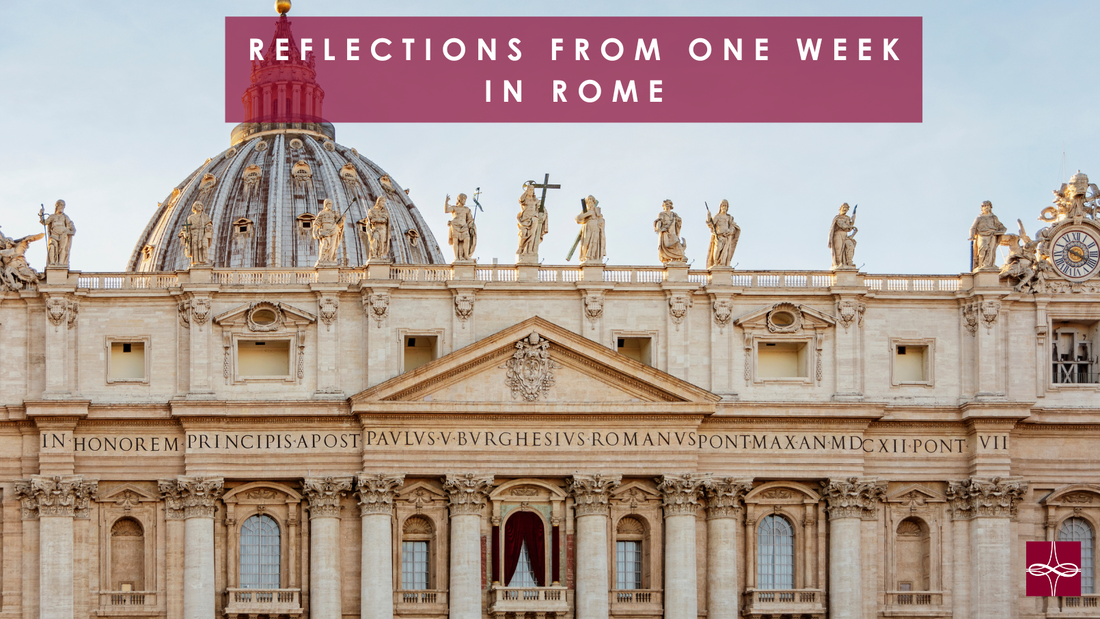
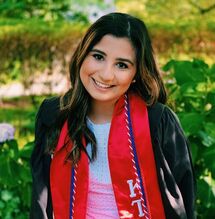
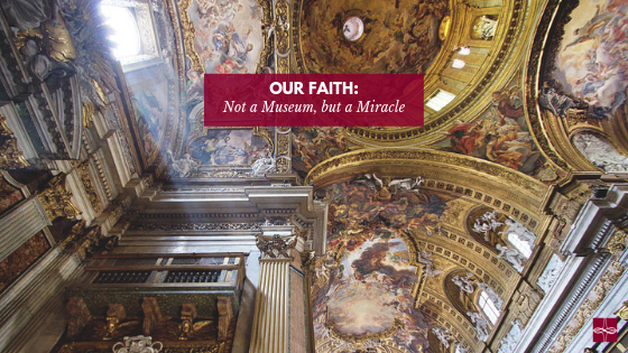
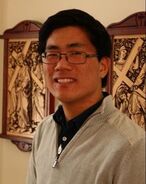
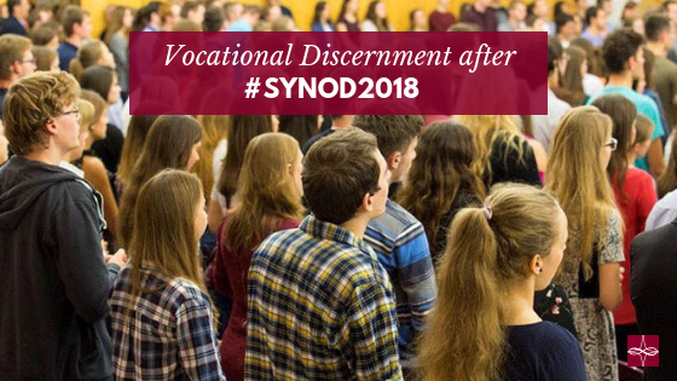
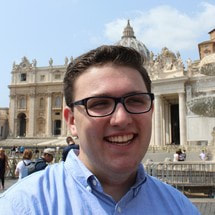
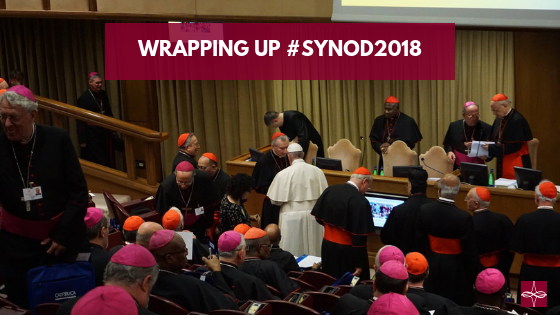

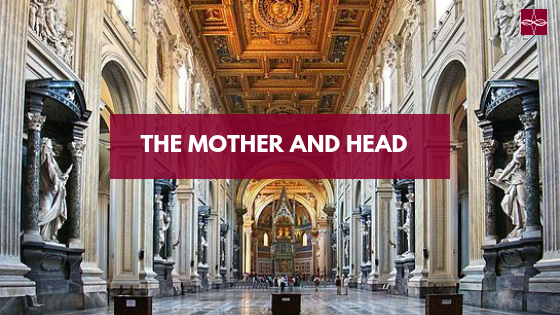
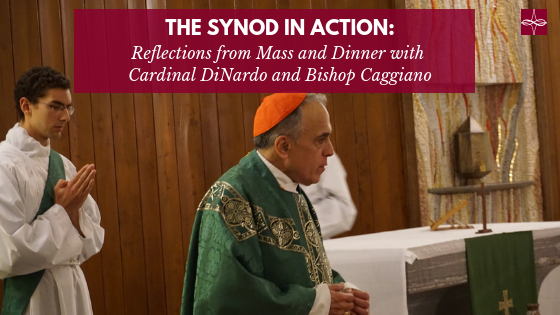
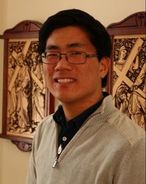
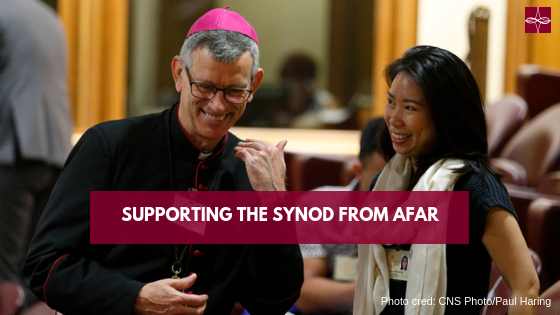

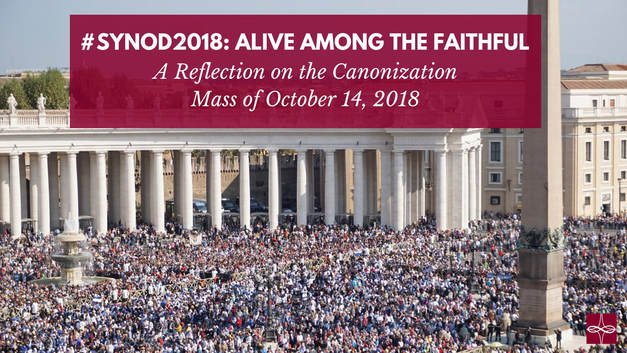
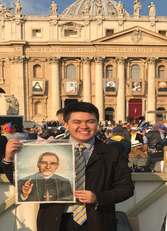
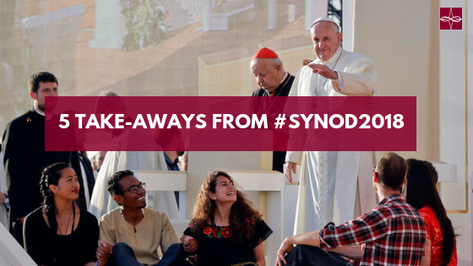

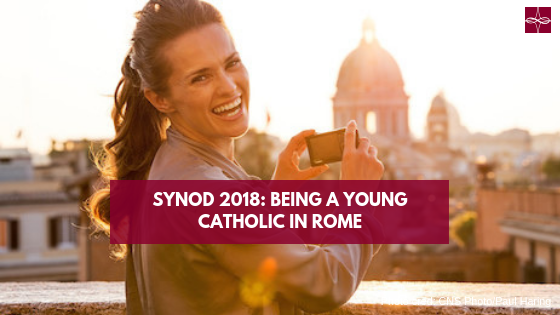
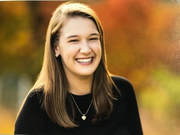
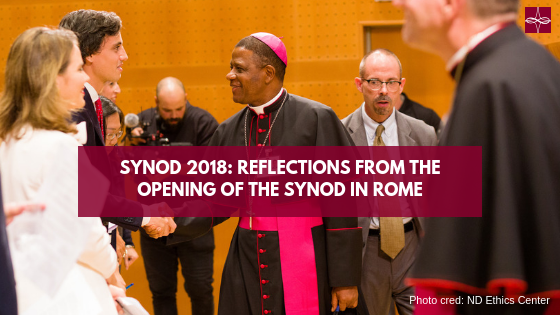
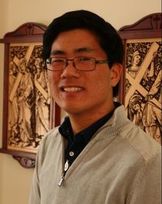
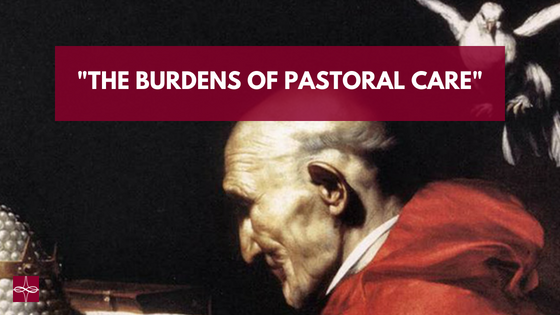

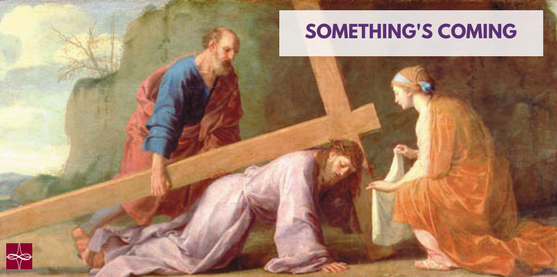

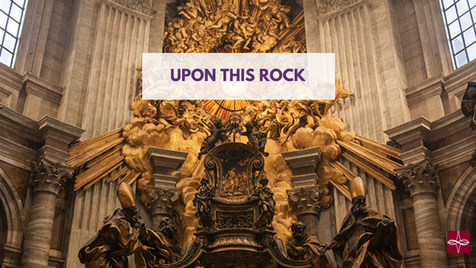

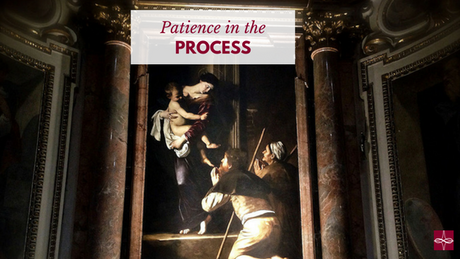

 RSS Feed
RSS Feed